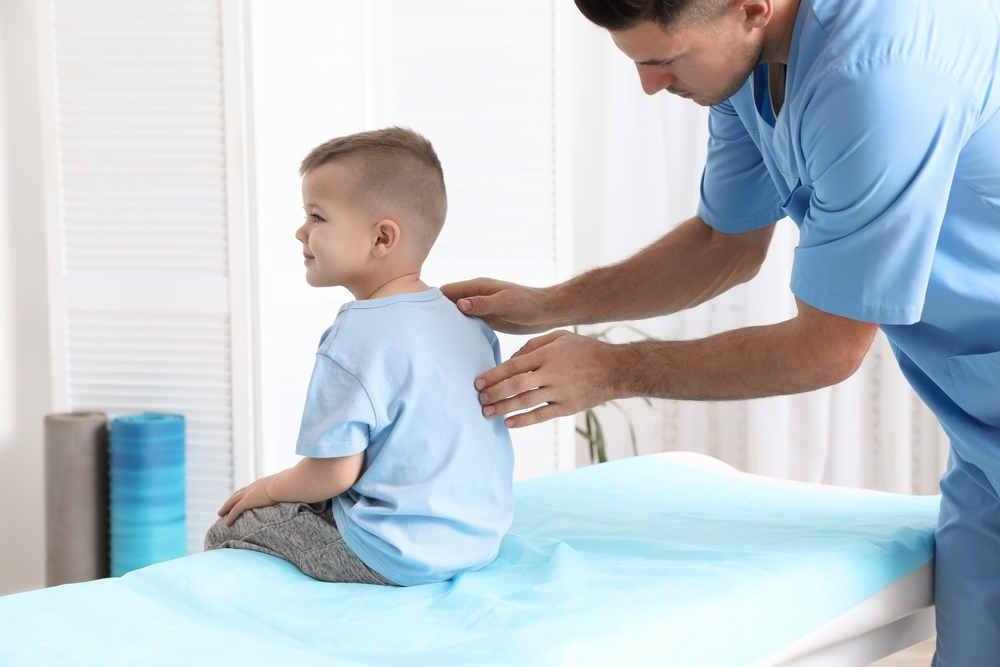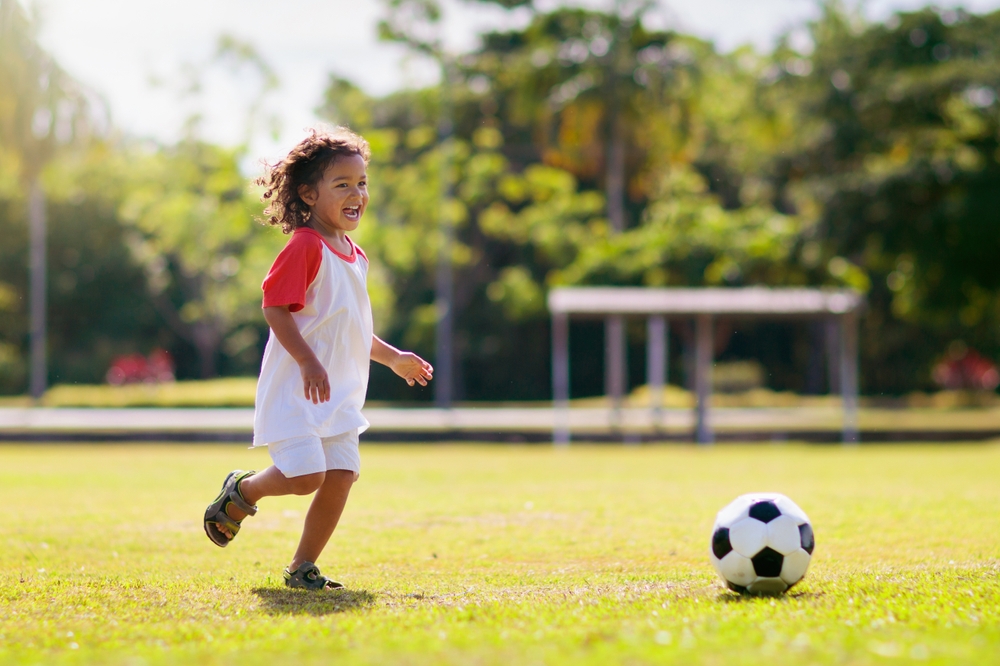Scoliosis in Children: What to Do After a Scoliosis Diagnosis
Hannah is a 14-year-old girl that plays many sports. In the early spring, Hannah started experiencing mild back pain, which impacted her sleep quality.
Hannah’s pediatrician noticed a slight abnormal sideways curve in her back at the center of the spine. This curve is a common condition in people referred to as scoliosis. The doctor requested a follow-up appointment in six months to see the progression of her scoliosis.
Hannah was concerned about how she would play sports after her scoliosis diagnosis. She wondered if her scoliosis would flare up and cause her to sit out during her lacrosse game.
As Hannah’s body develops, the degree of the spinal curvature increases, making her shoulders uneven and putting more pressure on her body. Her pediatrician recommended a local scoliosis specialist to discuss brace therapy for children, and they fit her with a WCR brace. Hannah is currently receiving Schroth therapy at least once a week. The doctors are confident that these therapies will stop the progression of her scoliosis and improve her spinal curvature.
What Should I Do After My Child is Diagnosed with Scoliosis?
With adolescent idiopathic scoliosis, there could already be a progression in the condition. In Hannah’s case, waiting six months could make her condition harder to treat.
It’s important to find a scoliosis specialist and begin treatment immediately. Get a referral from your child’s primary physician and schedule an appointment with a local scoliosis therapist. Your child will be under proper guidance and care to treat scoliosis.
Your child’s scoliosis may be mild and should not interfere with their daily life. However, getting a proper diagnosis ensures your child is on top of scoliosis treatment. The last thing you want is time to go by before fixing the problem.
Educate Yourself on Scoliosis
What is Scoliosis?
Scoliosis is a condition that causes an abnormal lateral curvature of the spine. It is most common in children or adolescents. Scoliosis can occur in individuals with other conditions, such as cerebral palsy and muscular dystrophy. However, the cause of adolescent idiopathic scoliosis is unknown.

An individual’s scoliosis can be mild, but the spinal curvature progresses as they grow. A severe case of scoliosis can be disabling. It makes it hard to have a good range of motion and can compress a person’s chest, which makes it difficult for their lungs to function.
Can You Cure Scoliosis?
Unfortunately, you cannot cure scoliosis. We want to prevent its progression and correct the curvature of the spine as early as possible.
Once your child fully develops, it becomes harder to correct scoliosis. Both invasive and non-invasive scoliosis treatment methods will help individuals manage their scoliosis. Specialists may discuss surgery instead of non-invasive scoliosis treatment methods like scoliosis bracing therapy. The goal of brace therapy for children is to allow the patient to live normally without pain, discomfort, or back deformity.
Consider All Treatment Options For Your Child
Innovative Scoliosis Bracing Therapy
Scoliosis bracing therapy is a non-invasive treatment that helps manage scoliosis symptoms. There are many bracing therapies, such as Rigo-Cheneau brace therapy and WCR brace therapy. While scoliosis bracing therapy cannot cure scoliosis, it can slow or halt its progression. It helps reduce the symptoms and makes it easier for patients to complete their daily routines.
Brace therapy is effective if the curvature is moderate and doctors treat the diagnosis before the bones develop. We want to prevent the spinal curvature from worsening as the patient grows and their body develops. Brace therapy keeps the spine straight to prevent the vertebrae from twisting to one side of the back.
According to a 2013 BrAIST study from Dr. Stuart Weinstein about scoliosis bracing therapy for adolescent idiopathic scoliosis, the average success rate of the treatment is 85.4%. As of 2019, the Scoliosis Research Society confirmed bracing is the most successful treatment for adolescent idiopathic scoliosis.
Scoliosis bracing therapy does not hurt your child. Patients get used to wearing the brace, and most people do not think about it as much. There might be some discomfort if the skin becomes irritated from wearing the brace. However, there should be no problem if your child follows the doctor’s instructions.
Bracing therapy can be expensive, depending on the design of the brace. The average cost of traditional scoliosis bracing is between $5,000 and $10,000.
Schroth Therapy
Schroth therapy is a non-invasive scoliosis treatment method that uses exercises to rotate, elongate, and stabilize the spine in a three-dimensional plane. The tailored activities gradually return the curve to a normal position through breathing techniques, muscle synergy, stretching, posture, and education.
The Schroth method for scoliosis treatment is beneficial for children and adolescents with scoliosis. Patients can use this method for both mild and severe spinal curvatures. Your child’s doctor will evaluate the severity of their scoliosis and develop a customized plan.
Is Scoliosis Surgery Right for My Child?
Doctors may recommend surgery in severe cases, such as congenital and neuromuscular scoliosis. However, in cases like mild adolescent idiopathic scoliosis, there are non-invasive treatment methods available.
Doctors may perform surgery as a quick fix if it helps the patient. For example, doctors may choose surgery for a freshman who wants to return to their sports program as soon as possible. In most cases, scoliosis surgery only fixes the lateral curve but not the rotational curve.
One scoliosis surgery can lead to another and does not always correct the problem. A 2019 case study in The American Academy of Orthopedic Surgeons states that physiotherapy with scoliosis-specific exercises (PSSEs) is as effective as surgery. The challenge is to educate the quick-fix mentality with non-invasive approaches.
According to the ISASS, the average cost of scoliosis surgery was $140,286 from 2006 to 2009. With healthcare expenses increasing, one can only speculate how much surgery costs now.
Support your Child Through Mental Struggles from Scoliosis
Girls and boys with scoliosis have physical and emotional challenges. For example, the child may be reluctant to take their shirt off at a pool party because they do not want their friends to see a shoulder deformity.
Parents and teachers need to be sensitive to the child’s emotional needs as they go through this challenge. If your child is having difficulties, explaining the long-term benefits of brace therapy and acknowledging their concerns and fears is important. You might be surprised how much a short chat helps if you strive to listen and understand how they feel.
Learn How to Live with Scoliosis
Can you play sports with Scoliosis?
Your child can continue to take part in sports programs with scoliosis. However, it is important to avoid activities that could worsen the condition. For example, your child’s doctor might recommend avoiding torso extensions, repeated extensions of the spine, high jumps, and certain dance and yoga positions. These activities can cause the vertebrae to rotate further into the curve.

The best sports to play with scoliosis include:
- swimming
- cycling
- soccer
- strength training
- cross-country skiing
- badminton
- table sports
- hiking
How often do we need to visit the doctor?
It depends on the severity of the curve and the doctor’s advice. If the doctor worries that the spinal curve is increasing, they may want to examine your child every four to six months. It is important to speak with the doctor to determine the best schedule for your child.
Next Steps at Scoliosis Therapy Centers
Having a child diagnosed with scoliosis can be challenging for both parents and the child. It is in the best interest of your child to book an appointment with a scoliosis specialist right away. The doctor can advise if your child requires treatment and how you can support your child with their scoliosis diagnosis and treatment. The goal is to treat scoliosis before your child fully develops. Otherwise, treatment options become limited and more challenging.
While your child cannot get rid of their scoliosis, they can live a better and more comfortable life if they receive treatment at the right time. Contact us today and schedule a visit with one of our specialists to discuss non-invasive scoliosis treatment for your child today. We will discuss with you the options and find an effective treatment for your child. You can find an expert near you to help your child through this journey and live to their full potential.


